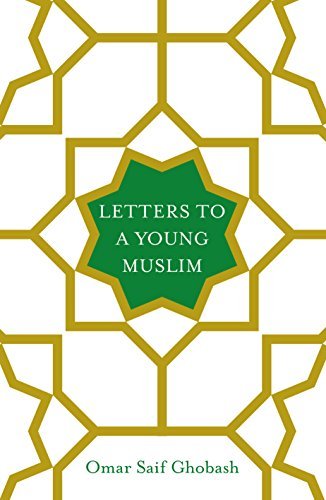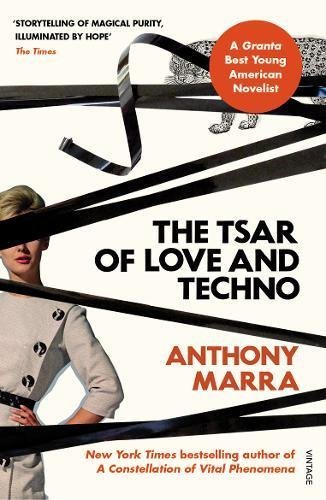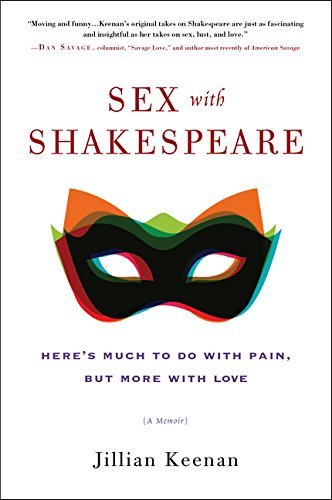Photo

The Standing Chandelier
Lionel Shriver
0 notes
Photo

Muzułmanie w Europie
Nilufer Gole
Muzulmanie w Europie. Dzisiejsze kontrowersje wokol islamuKsiazka powstala w wyniku badan socjologicznych przeprowadzonych w latach 2009-2013 w dwudziestu jeden miastach europejskich (m.in. w Paryzu, Kopenhadze, Bolonii, Oslo, Brukseli i Sarajewie). W kazdym z tych miast pojawily sie kontrowersje zwiazane z roznymi przejawami obecnosci muzulmanow w przestrzeni publicznej, takimi jak noszenie chusty przez kobiety, uliczne modlitwy, budowa meczetow, sklepy i bary halal czy tez granica miedzy wolnoscia slowa a ochrona uczuc religijnych. Autorka przedstawia historie i tlo poszczegolnych sporow, cytuje uczestnikow publicznej debaty: socjologow, publicystow, dzialaczy spolecznych i politykow, swieckich i muzulmanskich intelektualistow. Oddaje tez glos zwyklym muzulmanom i pokazuje, jak bardzo niejednorodne sa to spolecznosci, jak zroznicowane sa ich opinie w poszczegolnych kwestiach. Jej ksiazka jest takze swiadectwem tego, jak w ciagu ostatnich kilku lat w Europie zmienial sie polityczny i spoleczny klimat wokol islamu. \nW kazdym z opisywanych miast socjolozka Nilufer Gole wraz ze swoja ekipa prowadzi wywiady wsrod lokalnej spolecznosci, a potem organizuje spotkanie, w ktorym biora udzial reprezentanci obu stron konfliktu. To niekiedy pierwszy raz, kiedy uczestnicy sporu maja okazje wysluchac swoich argumentow i sprobowac sie nawzajem zrozumiec. \nKsiazka Nilufer Gole to zatem nie tylko przekrojowa prezentacja kontrowersji zwiazanych z obecnoscia muzulmanow w Europie, ale i zapis pionierskiego przedsiewziecia, ktorego celem jest przekroczenie spolecznych podzialow i budowa spoleczenstwa opartego na szacunku. \nNilufer Gole (ur. 1953 w Turcji) –
0 notes
Photo

Norse Mythology
Neil Gaiman
Introducing an instant classic―master storyteller Neil Gaiman presents a dazzling version of the great Norse myths.
Neil Gaiman has long been inspired by ancient mythology in creating the fantastical realms of his fiction. Now he turns his attention back to the source, presenting a bravura rendition of the great northern tales.
In Norse Mythology, Gaiman stays true to the myths in envisioning the major Norse pantheon: Odin, the highest of the high, wise, daring, and cunning; Thor, Odin’s son, incredibly strong yet not the wisest of gods; and Loki―son of a giant―blood brother to Odin and a trickster and unsurpassable manipulator.
Gaiman fashions these primeval stories into a novelistic arc that begins with the genesis of the legendary nine worlds and delves into the exploits of deities, dwarfs, and giants. Once, when Thor’s hammer is stolen, Thor must disguise himself as a woman―difficult with his beard and huge appetite―to steal it back. More poignant is the tale in which the blood of Kvasir―the most sagacious of gods―is turned into a mead that infuses drinkers with poetry. The work culminates in Ragnarok, the twilight of the gods and rebirth of a new time and people.
Through Gaiman’s deft and witty prose emerge these gods with their fiercely competitive natures, their susceptibility to being duped and to duping others, and their tendency to let passion ignite their actions, making these long-ago myths breathe pungent life again.
0 notes
Photo

Secret Rendezvous
Kobo Abe
From the acclaimed author of Woman in the Dunes comes Secret Rendezvous***,* the bizarrely erotic and comic adventures of a man searching for his missing wife in a mysteriously vast underground hospital.
From the moment that an ambulance appears in the middle of the night to take his wife, who protests that she is perfectly healthy, her bewildered husband realizes that things are not as they should be. His covert explorations reveal that the enormous hospital she was taken to is home to a network of constant surveillance, outlandish sex experiments, and an array of very odd and even violent characters. Within a few days, though no closer to finding his wife, the unnamed narrator finds himself appointed the hospital’s chief of security, reporting to a man who thinks he’s a horse. With its nightmarish vision of modern medicine and modern life, **Secret Rendezvous is another masterpiece from Japan’s most gifted and original writer of serious fiction.
0 notes
Photo

Jako dowód i wyraz przyjaźni: Reportaże o Pałacu Kultury
0 notes
Photo

Letters to a Young Muslim
Omar Saif Ghobash
****A New York Times Editor's Pick****
****One of Time's Most Anticipated Books of 2017, a Bustle Best Nonfiction Pick for January 2017, a Chicago Review of Books Best Book to Read in January 2017, an Amazon Best of January 2017 in History, a Stylist Magazine Best Book of 2017, included in New Statesman's What to Read in 2017****
From the Ambassador of the UAE to Russia comes Letters to a Young Muslim, a bold and intimate exploration of what it means to be a Muslim in the twenty-first century.
In a series of personal and insightful letters to his sons, Omar Saif Ghobash offers a vital manifesto that tackles the dilemmas facing not only young Muslims but everyone navigating the complexities of today’s world. Full of wisdom and thoughtful reflections on faith, culture and society. This is a courageous and essential book that celebrates individuality whilst recognising it is our shared humanity that brings us together.
Written with the experience of a diplomat and the personal responsibility of a father; Ghobash’s letters offer understanding and balance in a world that rarely offers any. An intimate and hopeful glimpse into a sphere many are unfamiliar with; it provides an understanding of the everyday struggles Muslims face around the globe.
0 notes
Photo

Lust
Roald Dahl
From Roald Dahl, the master of the sting in the tail, a newly collected book of his darkest stories We fall not in love but in lust . . . Lust, in all its myriad forms, consumes us. What won't we do to achieve our heart's desire? In these ten tales of twisted love master storyteller Roald Dahl explores how our darkest impulses reveal who we really are. Here you'll read a story concerning wife swapping with a sting in its tail, hear of the aphrodisiac that drives men into a frenzy, discover the last act in a tale of jilted first love and discover the naked truth of art, among others. Dahl understood our deepest secrets, desires and fears and Lust is one of four books - the rest being Madness, Cruelty and Deception - that explore our hidden selves.
0 notes
Photo

The Tsar of Love and Techno
Anthony Marra
From the author of National Book Award longlist selection and "New York Times "bestseller "A Constellation of Vital Phenomena" come these dazzling, poignant and lyrical interwoven stories about family, sacrifice, the legacy of war and the redemptive power of art.
This stunning, exquisitely written collection introduces a cast of remarkable characters whose lives intersect in ways both life-affirming and heartbreaking. A 1930s Soviet censor painstakingly corrects offending photographs, deep underneath Leningrad, bewitched by the image of a disgraced prima ballerina. A chorus of women recount their stories and those of their grandmothers, former gulag prisoners who settled their Siberian mining town. Two pairs of brothers share a fierce, protective love. Young men across the former USSR face violence at home and in the military. And great sacrifices are made in the name of an oil landscape unremarkable except for the almost incomprehensibly peaceful past it depicts. In stunning prose, with rich character portraits and a sense of history reverberating into the present, "The Tsar of Love and Techno" is a captivating work from one of our greatest new talents.
0 notes
Photo

Listen to This
Alex Ross
One of The Telegraph's Best Music Books 2011
Alex Ross's award-winning international bestseller, The Rest Is Noise: Listening to the Twentieth Century, has become a contemporary classic, establishing Ross as one of our most popular and acclaimed cultural historians.* Listen to This*, which takes its title from a beloved 2004 essay in which Ross describes his late-blooming discovery of pop music, showcases the best of his writing from more than a decade at* The New Yorker*. These pieces, dedicated to classical and popular artists alike, are at once erudite and lively. In a previously unpublished essay, Ross brilliantly retells hundreds of years of music history―from Renaissance dances to Led Zeppelin―through a few iconic bass lines of celebration and lament. He vibrantly sketches canonical composers such as Schubert, Verdi, and Brahms; gives us in-depth interviews with modern pop masters such as Björk and Radiohead; and introduces us to music students at a Newark high school and indie-rock hipsters in Beijing.
Whether his subject is Mozart or Bob Dylan, Ross shows how music expresses the full complexity of the human condition. Witty, passionate, and brimming with insight, *Listen to This *teaches us how to listen more closely.
0 notes
Photo

The Hidden Life of Trees: What They Feel, How They Communicate―Discoveries from a Secret World
Peter Wohlleben
The first of a three-part series investigating the wonders of nature by New York Times bestselling author Peter Wohlleben. Watch for Book 2, The Inner Life of Animals, coming November 2017
Are trees social beings? In this international bestseller, forester and author Peter Wohlleben convincingly makes the case that, yes, the forest is a social network. He draws on groundbreaking scientific discoveries to describe how trees are like human families: tree parents live together with their children, communicate with them, support them as they grow, share nutrients with those who are sick or struggling, and even warn each other of impending dangers. Wohlleben also shares his deep love of woods and forests, explaining the amazing processes of life, death, and regeneration he has observed in his woodland.
After learning about the complex life of trees, a walk in the woods will never be the same again.
Includes a Note From a Forest Scientist, by Dr.Suzanne Simard
2 notes
·
View notes
Photo

The Good Women of China: Hidden Voices
Xinran Xue
For seven years, Xinran Xue hosted a daily radio phone-in programme for Radio Nanjing during which she discussed women's lives, and invited women to call in and talk about themselves. Broadcast between 10 and 12 at night, Words on the Night Breeze soon became famous all over China for its powerful, honest discussions of what it means to be a woman in today's China. It started in 1990, a time when China seemed to be 'opening up', both for the Chinese and for the world. Xinran's programme revealed aspects of women's lives that had never been talked about in public before. She felt as if she was opening a tiny window into a huge fortress whose inhabitants had never before communicated with the outside world. Soon she was receiving over two hundred letters a day from women telling her their stories. She realised that she knew far less than she had thought about what it means to be a Chinese woman and embarked on a journey of discovery to collect their stories. The stories presented here tell of almost inconceivable suffering: rape, sexual abuse, the separation of parents from their children, the suppression of human emotion in order to survive the Communist regime - never before have the tortured souls of Chinese women been laid so bare. And yet this is also a book about love - about how, despite cruelty, despite politics, the female urge to nurture and cherish remains. And then there is Xinran herself: an extraordinary woman who, despite her own unhappy past, has given her life to saving the stories of Chinese women from oblivion.
0 notes
Photo

Blue Nights
Joan Didion
From one of our most powerful writers, a work of stunning frankness about losing a daughter. Richly textured with bits of her own childhood and married life with her husband, John Gregory Dunne, and daughter, Quintana Roo, this new book by Joan Didion examines her thoughts, fears, and doubts regarding having children, illness, and growing old.Blue Nights opens on July 26, 2010, as Didion thinks back to Quintana's wedding in New York seven years before. Today would be her wedding anniversary. This fact triggers vivid snapshots of Quintana's childhood - in Malibu, in Brentwood, at school in Holmby Hills. Reflecting on her daughter but also on her role as a parent, Didion asks the candid questions any parent might about how she feels she failed either because cues were not taken or perhaps displaced. `How could I have missed what was clearly there to be seen?' Finally, perhaps we all remain unknown to each other.Blue Nights - the long, light evening hours that signal the summer solstice, `the opposite of the dying of the brightness, but also its warning' - like The Year of Magical Thinking before it, is an iconic book of incisive and electric honesty.
0 notes
Photo

The Periodic Table (Penguin Modern Classics)
Primo Levi
Primo Levi's The Periodic Table is a collection of short stories that elegantly interlace the author's experiences in Fascist Italy, and later in Auschwitz, with his passion for scientific knowledge and discovery. This Penguin Modern Classics edition of is translated by Raymond Rosenthal with an essay on Primo Levi by Philip Roth.A chemist by training, Primo Levi became one of the supreme witnesses to twentieth-century atrocity. In these haunting reflections inspired by the elements of the periodic table, he ranges from young love to political savagery; from the inert gas argon - and 'inert' relatives like the uncle who stayed in bed for twenty-two years - to life-giving carbon. 'Iron' honours the mountain-climbing resistance hero who put iron in Levi's student soul, 'Cerium' recalls the improvised cigarette lighters which saved his life in Auschwitz, while 'Vanadium' describes an eerie post-war correspondence with the man who had been his 'boss' there. In his essay, Philip Roth reproduces a conversation with Primo Levi, delving into the process of Levi's authorial technique, his sense of identity and distinctiveness and the relationship between science, writing and survival.Primo Levi (1919-87), an Italian Jew, did not come to the wide attention of the English-reading audience until the last years of his life. A survivor of the Holocaust and imprisonment in Auschwitz, Levi is considered to be one of the century's most compelling voices, and The Periodic Table is his most famous book. Levi is the author of Moments of Reprieve and If Not Now, When?, also available in Penguin Modern Classics.Philip Roth is the author of Nemesis and The Plot Against America, and winner of the both the Pulitzer prize, and the Man Booker International prize. If you enjoyed The Periodic Table, you might like Levi's If Not Now, When?, also available in Penguin Modern Classics.'A book it is necessary to read'Saul Bellow, author of Herzog'One of the finest writers in post-war Italy'The Times
0 notes
Photo

Sacred Sexuality: The Perfumed Garden of the Shaykh Nefwazi
Muḥammad ibn Muḥammad al-Nafzawi
0 notes
Photo

Bolshoi Confidential: Secrets of the Russian Ballet from the Rule of the Tsars to Today
Simon Morrison
An enthralling, definitive new history of the Bolshoi Ballet, where visionary performances onstage compete with political machinations backstage.
On a freezing night in January 2013, a hooded assailant hurled acid in the face of the artistic director of the Bolshoi Ballet. The crime, organized by a lead soloist, dragged one of Russia’s most illustrious institutions into scandal. The Bolshoi Theater had been a crown jewel during the reign of the tsars and an emblem of Soviet power throughout the twentieth century. Under Putin in the twenty-first century, it has been called on to preserve a priceless artistic legacy and mirror Russia’s neo-imperial ambitions. The attack and its torrid aftermath underscored the importance of the Bolshoi to the art of ballet, to Russia, and to the world.
The acid attack resonated far beyond the world of ballet, both into Russia’s political infrastructure and, as renowned musicologist Simon Morrison shows in his tour-de-force account, the very core of the Bolshoi’s unparalleled history. With exclusive access to state archives and private sources, Morrison sweeps us through the history of the storied ballet, describing the careers of those onstage as well as off, tracing the political ties that bind the institution to the varying Russian regimes, and detailing the birth of some of the best-loved ballets in the repertoire.
From its disreputable beginnings in 1776 at the hand of a Faustian charlatan, the Bolshoi became a point of pride for the tsarist empire after the defeat of Napoleon in 1812. After the revolution, Moscow was transformed from a merchant town to a global capital, its theater becoming a key site of power. Meetings of the Communist Party were hosted at the Bolshoi, and the Soviet Union was signed into existence on its stage. During the Soviet years, artists struggled with corrosive censorship, while ballet joined chess tournaments and space exploration as points of national pride and Cold War contest. Recently, a $680 million restoration has restored the Bolshoi to its former glory, even as prized talent has departed.
As Morrison reveals in lush and insightful prose, the theater has been bombed, rigged with explosives, and reinforced with cement. Its dancers have suffered unimaginable physical torment to climb the ranks, sometimes for so little money that they kept cows at home whose milk they could sell for food. But the Bolshoi has transcended its own fraught history, surviving 250 years of artistic and political upheaval to define not only Russian culture but also ballet itself. In this sweeping, definitive account, Morrison demonstrates once and for all that, as Russia goes, so goes the Bolshoi Ballet. 16 pages of illustrations
0 notes
Photo

Erotic Stories for Punjabi Widows
Balli Kaur Jaswal
Every woman has a secret life . . .Nikki, a modern young Punjabi, lives in cosmopolitan London, where she tends bar at the local pub. The daughter of Indian immigrants, she's spent most of her twenty-odd years distancing herself from the traditional Sikh community of her childhood, preferring a more independent (that is, Western) life. When her father's death leaves the family financially strapped, Nikki, a law school dropout, impulsively takes a job teaching a "creative writing" course at the community center in the beating heart of London's close-knit Punjabi community.The proper Sikh widows who show up are expecting to learn English, not short-story writing. When one of the widows finds a book of sexy stories in English and shares it with the class, Nikki realizes that beneath their white dupattas, her students have a wealth of fantasies and memories. Eager to liberate these modest women, she teaches them how to express their untold stories, unleashing creativity of the most unexpected--and exciting--kind.As more women are drawn to the class, Nikki warns her students to keep their work secret from the Brotherhood, a group of highly conservative young men who have appointed themselves the community's "moral police." But when the widows' gossip offer shocking insights into the death of a young wife--a modern woman like Nikki--and some of the class erotica is shared among friends, it sparks a scandal that threatens them all.
0 notes
Photo

Sex with Shakespeare: Here's Much to Do with Pain, but More with Love
Jillian Keenan
A provocative, moving, kinky, and often absurdly funny memoir about Shakespeare, love, obsession, and spanking
When it came to understanding love, a teenage Jillian Keenan had nothing to guide her—until a production of The Tempest sent Shakespeare’s language flowing through her blood for the first time. In *Sex with Shakespeare, *she tells the story of how the Bard’s plays helped her embrace her unusual sexual identity and find a love story of her own.
Four hundred years after Shakespeare’s death, Keenan’s smart and passionate memoir brings new life to his work. With fourteen of his plays as a springboard, she explores the many facets of love and sexuality—from desire and communication to fetish and fantasy. In *A Midsummer Night**’s Dream*, Keenan unmasks Helena as a sexual masochist—like Jillian herself. In *Macbeth*, she examines criminalized sexual identities and the dark side of “privacy.” *The Taming of the Shrew* goes inside the secret world of bondage, domination, and sadomasochism, while *King Lear *exposes the ill-fated king as a possible sexual predator. Moving through the canon, Keenan makes it abundantly clear that literature is a conversation. In *Sex with Shakespeare*, words are love.
As Keenan wanders the world in search of connection, from desert dictatorships to urban islands to disputed territories, Shakespeare goes with her —and provokes complex, surprising, and wildly important conversations about sexuality, consent, and the secrets that simmer beneath our surfaces.
0 notes